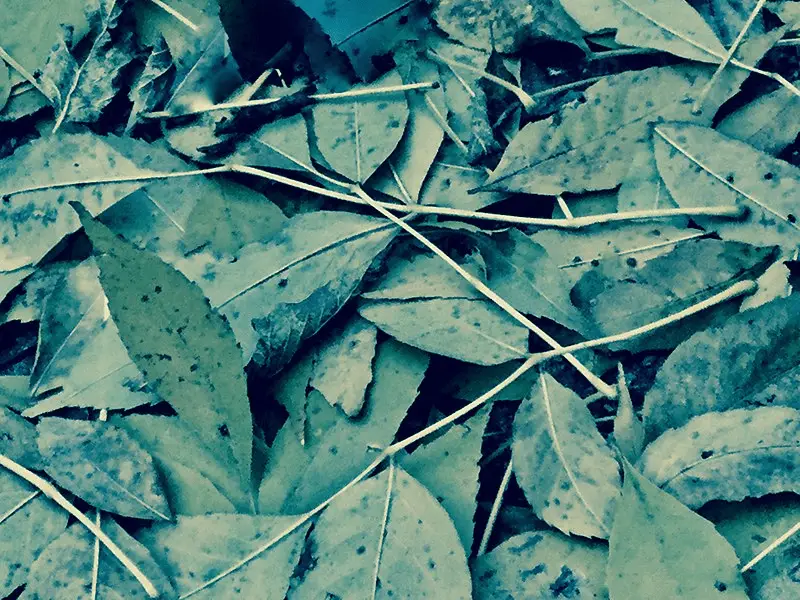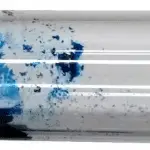Things that are blue are a rare phenomenon on our planet. Plants are not an exception to this rule. There are only a handful of plants, which have blue leaves. You will come across a few flowers that have blue hues. However, foliage plants have a tendency of being greener or grayer instead of blue.
Blue foliage
Some foliage specimens exist, which can, however, feature an intense blue color. Plants having blue leaves enhance a garden’s visual intensity. We will cover some of those rare plants with blue leaves in this article.
Scientists attribute a few reasons why plants with blue leaves exist. One of the explanations is these plants have cutin in their leaves, which creates a bluish-silvery look. A second explanation is delayed gardening that may happen in several kinds of plants.
It is interesting to note that plants do not feature a real blue pigment. However, some plants can generate the color through the absorption of light waves and reflection of light. So, it means that while blue leaves are not impossible, it is rare.
Plants, which feature blue leaves, do not have the hue of the clear sky minus the clouds. Rather, the color looks more like the stormy sea, which has toned down. The unique shade can be an excellent addition to the several other shades in any garden.
Thus, plants with blue leaves can combine with an array of different other colors in a delightful way. For instance, maroon foliage next to blue leaves are a brilliant contrast, which is eye-catching, as well as, enhance the maroon’s red tones. Likewise, yellow and blue are considered as classic tones.
You can also try to combine a golden-colored Euonymous with a blue hosta. These two look mesmerizing together. However, it is imperative to note that these plants sport blue, which is greener or grayer.
There are several plants with blue-green leaves with some variants so the spectacular foliage becomes even more interesting and alluring. If you want to add subtle beauty, you may add these plants to areas that have yellow or green-toned flowers and foliage.
In case you are serious about a visual explosion, you can mix purple, deep purple, and yellow tones with blue-green leaves.
Some plants having blue leaves
A few of the most charming conifers feature bluish-green to blue leaves.
Dwarf Alberta blue spruce: It is a fine instance of an evergreen plant with an intense blue color.
Ice Blue juniper and French Blue Scotch pine are also known to characterize leaves with intensely blue and are needled. Other evergreens include Chamaecyparis pisifera ‘Curly Tops’ or Cedrus atlantica ‘Glauca.’
There are several other flowing evergreen plants, grasses, and conifers from where you can choose blue-toned leaves for your garden. It is easy to use blue leaves in a garden from spring to summer. Several succulent also have silver or bluish-gray foliage like the ones mentioned below:
- Agave
- Yucca
- Sedum
- Euphorbia
One of the most well-known ornamental grasses, common blue fescue will be compact and relatively tiny for creating a great visual impact no matter where you plant them in your garden.
Mertensia Asiatica has leaves that are deep blue in color and are fleshy while its flowers are turquoise blue in color. Digger’s speedwell features waxy blue leaves. The plant has red stems while its flowers are violet-blue in color.
Other plants with blue leaves and have blue tones are as follows:
- Partridge feather
- Lavender
- Cushion bush
- Dusty miller
- Firewitch
- Cheddar pinks(Dianthus)
- Sea Foam artemisia
In case you are looking for a climber with blue leaves, you may try out Kintzley’s Ghost honeysuckle. The climber features bluish-gray leaves, which look like eucalyptus and has light blue flowers.
Indoor plants with blue leaves
Things that are blue in color are rare. Here are our top picks of indoor plants with blue leaves. Check them out below:
1. Hybrid Century Plant
Also known as “Blue Rapture”, it belongs to the variety of evergreen hybrid plants. The plant looks stunning and mesmerizing because of its silver-blue and fleshy foliage. Although most of the time, agaves are usually outdoor plants, it is possible for you to keep these plants on the porch or in a balcony where it can get some direct sunlight.
2. Hosta
Its botanical name is Hosta “Blue Angel.” At the outset, it is imperative to point out that it may be a challenge to grow this indoor plant indoors. However, if you are serious about growing it indoors, make sure to keep it in a bright and cool location. Ideally, it should get around four to five hours of sunlight in the morning, as well as, indirect light.
3. Naugahyde Philodendron
The botanical name of this indoor plant with blue leaves is Philodendron rugosum. The plant is also referred to as Pig Skin Philodendron. It is characterized by leathery, self-patterned slightly yellowish and blue-green leaves, which gives it a distinct look as compared to other Philo variants. However, make sure that you do not overwater it. Try to grow it in a location, which receives partial shade.
4. Cebu Blue Pothos
Its botanical name is Epipremnum pinnatum ‘Cebu Blue’. Belonging to the mesmerizing pothos variety, the plant is known for its silver-blue, shiny leaves, which shine in bright light. Irrespective of climbing or trailing, the plant can be a fantastic addition to any indoor garden. The plant needs easy care but requires bright sunlight for its growth.
5. Silver Sword Philodendron
Silver Sword Philodendron’s botanical name is Philodendron hastatum. It is one of the finest indoor plants that feature blue leaves on our least. The good news is that it is simple to grow it. Just make sure that it is kept in indirect and bright light so that the color display is the best. You should pinch it frequently for healthy and new growth.
6. Burro’s Tail
The indoor plant’s botanical name is Sedum morganianum. You may grow it in hanging baskets as it has trailing stems. Also called donkey’s tail, these stems feature blue-green leaves that have a chalky texture. The leaves are shaped like swollen teardrops. You should make sure that the plant receives moderate water, indirect but bright light for its proper growth.
7. Creeping Blue Sedum
Its botanical name is Sedum sieboldii. The plant is a fabulous and alluring amalgamation of pink and blue. The foliage of this indoor plant is fleshy and round. The leaves are of blue-gray color and have pink edges, which intensify further in summer.
8. Blue Glow
Blue Glow’s botanical name is Agave attenuata x Agave ocahui. It is a slow-growing evergreen plant, which offers blue-green leaves with a chalky texture, The edges of the leaves are finely serrated and are decorated with a red and golden band. The plant should get bright sunlight throughout the year for its proper growth.
9. Blue Barrel Cactus
Blue Barrel Cactus’s botanical name is Ferocactus glaucescens. It is also referred to as Echinocactus glaucescens and is characterized by silver-blue stems with golden-yellow spines. When the conditions are favorable, the plant can also produce light yellow flowers in summer or spring. The indoor plant is extremely simple to grow but is fond of high light indoors.
10. Blue Agave
Its botanical name is Agave tequilana. It is a variant of agave and is famous for its blue-green leaves. However, the plant is also popular for making Tequila. It can also produce yellow flowers but that may take around five to six years of time. The plant should not be over-watered and needs plenty of sunlight.
You will come across plants in a wide variety of colors. However, just like things that are blue in color are rare, you will hardly come across blue plants. One of the scientific explanations for this phenomenon is how most plants transform sunlight into energy, which is essential for their growth. The process, as many of you are aware, is known as photosynthesis.
The process includes plants using their green pigment called chlorophyll molecules to chemically convert water, carbon dioxide, energy, and light to create sugars. Each chlorophyll molecule absorbs the red-orange and violet-blue locations of the visual spectrum of light. However, it does not absorb green wavelengths.
Thus, every time we see these plants, we are looking at the color green as that is the visible spectrum, which is being reflected back. However, red and blue are getting absorbed.
A second explanation is for noticing a handful of blue hues in plants is because of their natural pigmentation. Several plants feature pigment molecules known as xanthophylls and carotenoids. These pigment molecules lead to yellow or orange color.
You will usually notice green leaves while they are growing because of the presence of the green pigment called chlorophyll. You also notice red, yellow, and orange colors during the fall. However, none of the pigments mentioned above are blue in color. It also signifies that all these pigments absorb light’s blue wavelength. They reflect various other colors.
That is the reason you do not usually come across plants with blue leaves just like other things that are blue in color. Plants with blue leaves are also not commonplace in the plant kingdom as plants do not have any true blue pigment in them. Thus, plants do not have a direct means to make a blue color.




